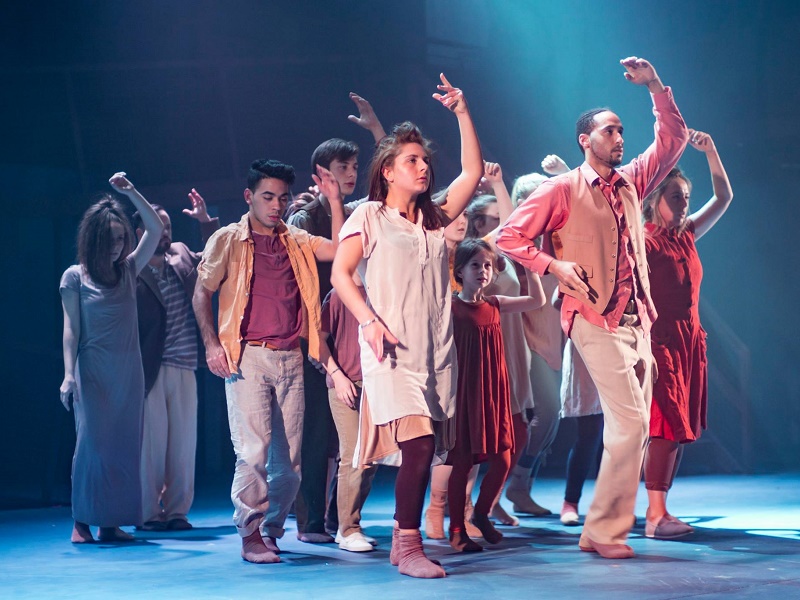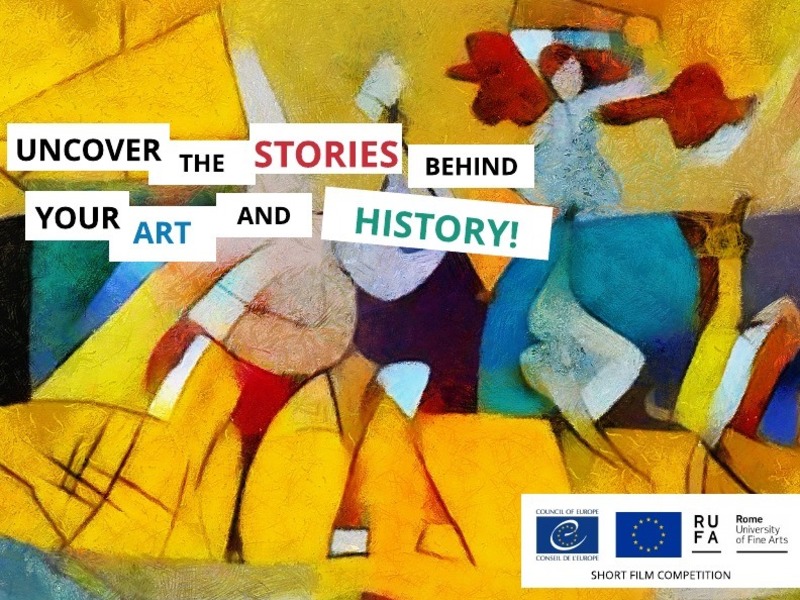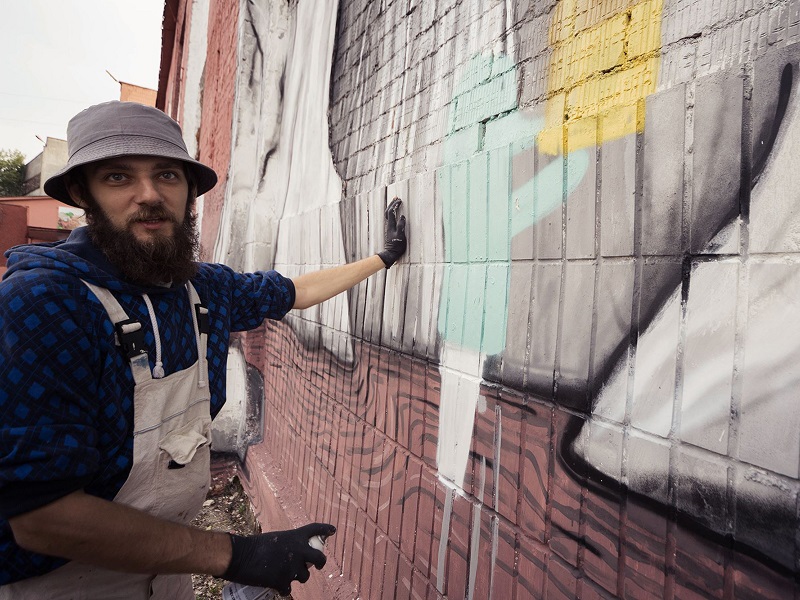
Evgeny Matyuto (Cowek) says “Artist Has the Right to Introduce Changes to Urban Environment”
Why did you choose street art and painting of monuments? How is this form of contemporary art currently developing in Belarus?
Personally, I’m attracted to street art due to its scale. The image is depicted on building facades. This means that the artist bears great responsibility for his work. The street for me is just another platform for the realisation of my ideas. Its unique atmosphere is precisely what attracts me to it.
It’s already four years now since this form of contemporary art has been filling our cities. Not just in Minsk, works by both Belarusian and foreign street artists have appeared. Several works created by them have been ranked the best in world. But even our artists, although they have less experience and fewer skills, are not inferior to their foreign counterparts. The difficulty is that in Belarus there are still not enough platforms, festivals and support that street artists receive in other countries. However, we have had a good start over the course of these years.
How is street art different from graffiti? What is the trend now?
Graffiti is simply reproductions and writing one’s name. Graffiti is a font. Street art is a form of art that has a social character. Street art aims for dialogue with the viewer, and often sparks off a strong reaction from the public.
What is the trend now?
It is hard to say. The world is saturated with bright images, which are sometimes devoid of any idea. It can be said that street art itself is in fashion today. It is fashionable now to paint on facades.
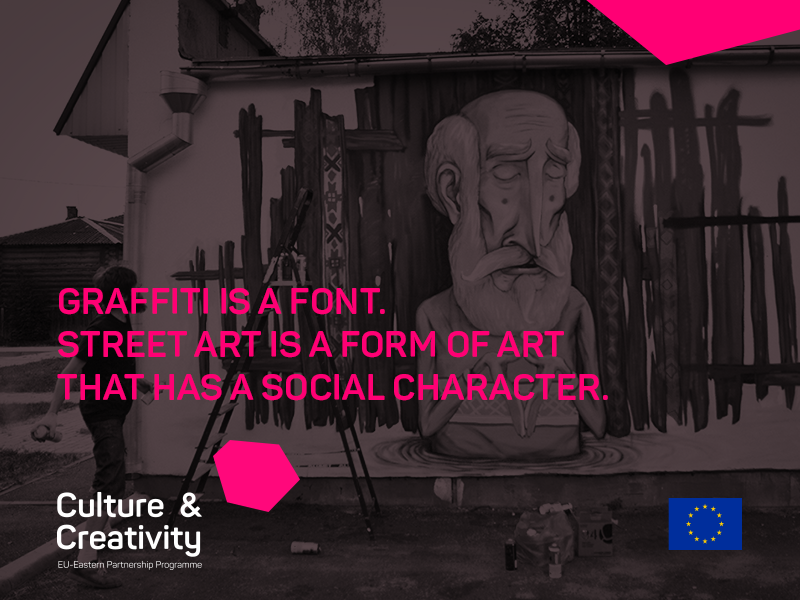
What are the problems that you are communicating about with the audience through your paintings? And so, what do you want to say to the townsfolk in Belarus? What subject, themes, representations, heroes are relevant for you and for Belarusian (or Minsk) street art in general?
There is no violence, politics, vehement statements or problems in my works. I’m inspired by my loved ones and close ones, friends, nature and everything that has life, which is imbued with love and light.
Sometimes, I don’t even understand what I’m painting, it all happens at a subconscious level. In my works, I show the interaction of man and his world, peace and miracles that may happen if you live in harmony with nature. The main characters of my work are elders, endowed with wisdom. They act as intermediaries between the stories on the walls and those who are looking at this wall. My paintings are full of philosophy and the spirit of those places where I was raised and where I live. Forests, parks where I spent much time have left a mark on my work. Trips to festivals, joint work with other artists also inspire me to create. I use our national symbols, ornaments, historical facts about the place where the work is located. I think that today artists from Belarus and those who come here have great interest in Belarusian history and folklore. Artists often use national ornaments and symbols. I really like that, I’m very pleased.
Many city residents will see your works (even without intending to). Can artists change the urban environment?
I try to use to the best effect a place where a building or small wall is located. The wall texture often helps find the subject, and then it is interesting to fit it in. The painting has to complement the existing architectural ensemble, and not destroy it, although I allow audacious interventions, as it is sometimes inevitable.
The artist has the right to introduce changes to the urban environment, he can revive it, and the viewer’s response is not always important to him. Each viewer will make up his or her mind, be it positive or negative. That’s of little importance. What matters is that the work provokes a reaction from him.
There was an incident in Minsk when local residents complained about the “Man With No Name” mural because of the depressive character of the image. Should the work, in your opinion, be painted over or left as it is? Do you have to obtain permission for street art in Belarus?
This work was created within the framework of the Urban Myths festival, organised by the Belarusian street artists’ community Signal in autumn 2015. Artists from around the world came to Minsk without sketches. They explored the city for several days, got to know the people and, on the basis of their impressions, developed the themes of their works, which were later depicted on the facades of buildings. World-renowned Greek artist INO thus saw our city and its residents. Using his original technique, he created “Man With No Name”. The fact that the work provoked a reaction is, in my opinion, a big plus. If this work had not appeared, everyone would be sitting in their flats. But instead people were given a reason to go out and express their opinions. There was such hubbub, and that’s great. I personally like the work. Its place is in an urban environment. Yes, it’s very bold, but street art should provoke emotions. And INO achieved that!
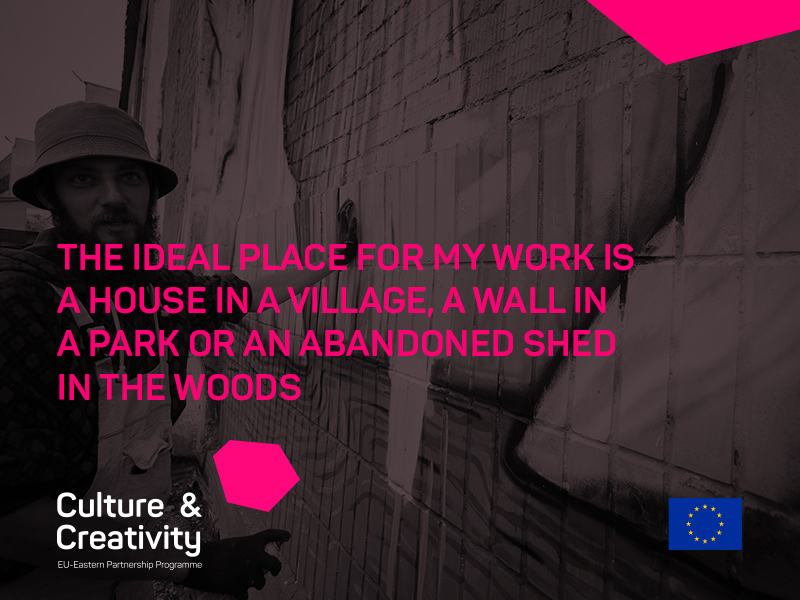
You are one of the founders of the Signal community. When was the organisation created?
Signal began its work in 2011. During this time, there have been exhibitions, including those staged jointly with the Museum of Contemporary Art and Centre for Contemporary Arts in Minsk. We’ve held several festivals such as “Must Act, Must Art”, “Urban Myths”, etc. The works of participants remained in Grodno, Mogilev, Gomel, Rogachev, Baranovichi. From 2012 to 2015 we held lectures and workshops to which we invite artists from the near and far abroad. They share their views on street art, pass on their experience.
At this time, more than 20 artists are actively working in Signal. We organise festivals, approve sketches, search for financial support, do everything so that the festival, workshops, lectures or exhibitions would take place. I make sure that the Signal group is updated on social networks with new and fresh material and I also take part in festivals, exhibitions and lectures as an artist. We help artists who need help to paint facades. It often happens if the site is complex, or a foreign artist comes for a short time and it is physically difficult to complete the job on his own.
Signal was founded as a non-profit organisation whose goal was to bring together street artists in the community. In 2012, we released the first book in our country of Belarusian street art in which we put together the best works of this genre of contemporary art in Belarus. The album came out with our own personal funds.
Do you need permission from the city or distirict administration to create street art?
Yes, such a permit is necessary. If Signal is organising a festival, we undertake the organisational functions, including approving the sketch at the city administration. If the artist wants to paint a facade himself, then the procedure for approving it is complicated. It’s his personal initiative. The process of going around offices requires a lot of time and effort.
How many street artists are there in Belarus today?
Today there are around 10 active street artists in our country. There are those who moved abroad, but they all work on the street. Often they come to our festival as participants.
You work under a pseudonym. Why? What does Cowek stand for?
I don’t always use my pseudonym. Sometimes I simply don’t sign my works, as I don’t believe it’s necessary. My pseudonym is just a set of letters that I like and has no meaning whatsoever. Soon I will go back to my name and surname, which my parents gave me, and I think it’s the right decision.
Which wall do you dream of painting?
I dream of making several important facades both in our country and abroad. There are enough such places, what matters is that the wall has texture, and that there is a park or public garden nearby. The ideal place for my work is a house in a village, a wall in a park or an abandoned shed in the woods. The site should have an atmosphere that is close to my heart.
----
Evgeny Matyuto (Cowek) was born in Lida, Grodno Region. Between 2003 and 2007 he studied at the Glebov Art School based in Minsk. In 2013, he graduated from the Belarusian Academy of Arts where he specialized in sculpture. He is the organiser and participant of various exhibitions, festivals and workshops both in Belarus and abroad. He has been working in street art and painting monuments since 2012. Evgeny Matyuto’s works can be seen in Gdansk (Poland), Yaremcha (Ukraine), and in Belarusian cities such as Lida, Baranovichi, Gomel, Mogilev, Vitebsk, Minsk, etc. Evgeny is one of the founders of the artist collective SIGNAL, which promotes street art in Belarus.

